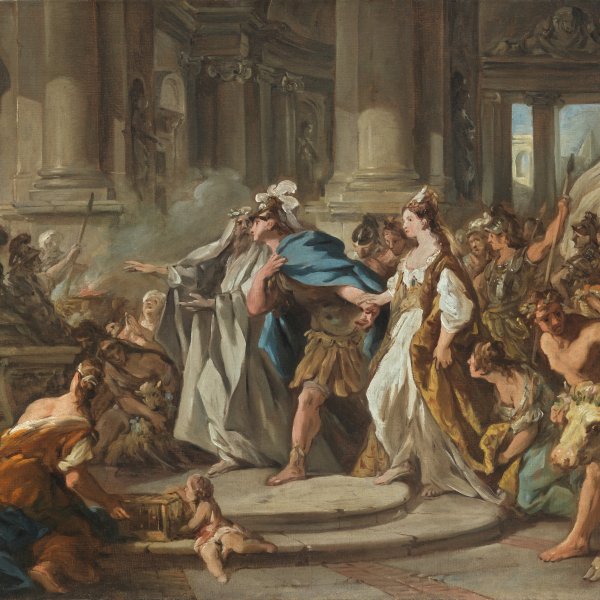Jean François de Troy
Paris, 1679 -Rome, 1752
Jean-François de Troy was born in Paris into a family of painters. He first studied with his father, François de Troy, and later at the Académie Royale de Peinture et Sculpture, of which he father was the director at that time and also a teacher. Although he did not win the Prix de Rome, his father sent him to Italy to complete his studies and he remained there from 1699 to 1706, but no works from this period have survived. In 1708 De Troy became a member of the Académie, submitting Niobe and her Children as his entry piece (Musée Fabre, Montpellier). Despite being officially classed as a history painter, Jean-François de Troy worked in almost all the pictorial genres. His most celebrated works are his tableaux de modes, a genre that he is considered to have invented and which depicted the leisure activities of aristocratic French society. The Declaration of Love of 1731 (Schloss Charlottenburg, Dresden) is one of his most famous and typical examples.
In 1724 De Troy was commissioned to execute two decorative paintings on the themes of Zephyrus and Flora and Acis and Galatea for the Hôtel du Grand Maître at Versailles. These works were followed by other commissions between 1734 and 1737 for the royal apartments at Versailles and Fontainebleau, including The Breakfast of Oysters (Musée Condé, Chantilly), The Glory of Princes lays claim to the Children of France (Versailles), and Breakfast during the Hunt (Musée du Louvre, Paris). In 1736 De Troy produced his famous series on The Story of Esther for the royal Gobelins tapestry manufactory, comprising seven large cartoons that were so well received they were woven eight times in the 18th century. Two years later the artist moved to Italy where he was made director of the French Academy in Rome, occupying that position until 1751.
In 1724 De Troy was commissioned to execute two decorative paintings on the themes of Zephyrus and Flora and Acis and Galatea for the Hôtel du Grand Maître at Versailles. These works were followed by other commissions between 1734 and 1737 for the royal apartments at Versailles and Fontainebleau, including The Breakfast of Oysters (Musée Condé, Chantilly), The Glory of Princes lays claim to the Children of France (Versailles), and Breakfast during the Hunt (Musée du Louvre, Paris). In 1736 De Troy produced his famous series on The Story of Esther for the royal Gobelins tapestry manufactory, comprising seven large cartoons that were so well received they were woven eight times in the 18th century. Two years later the artist moved to Italy where he was made director of the French Academy in Rome, occupying that position until 1751.




